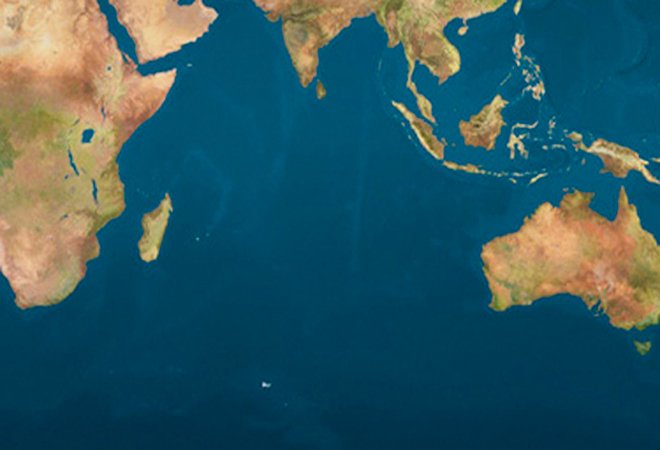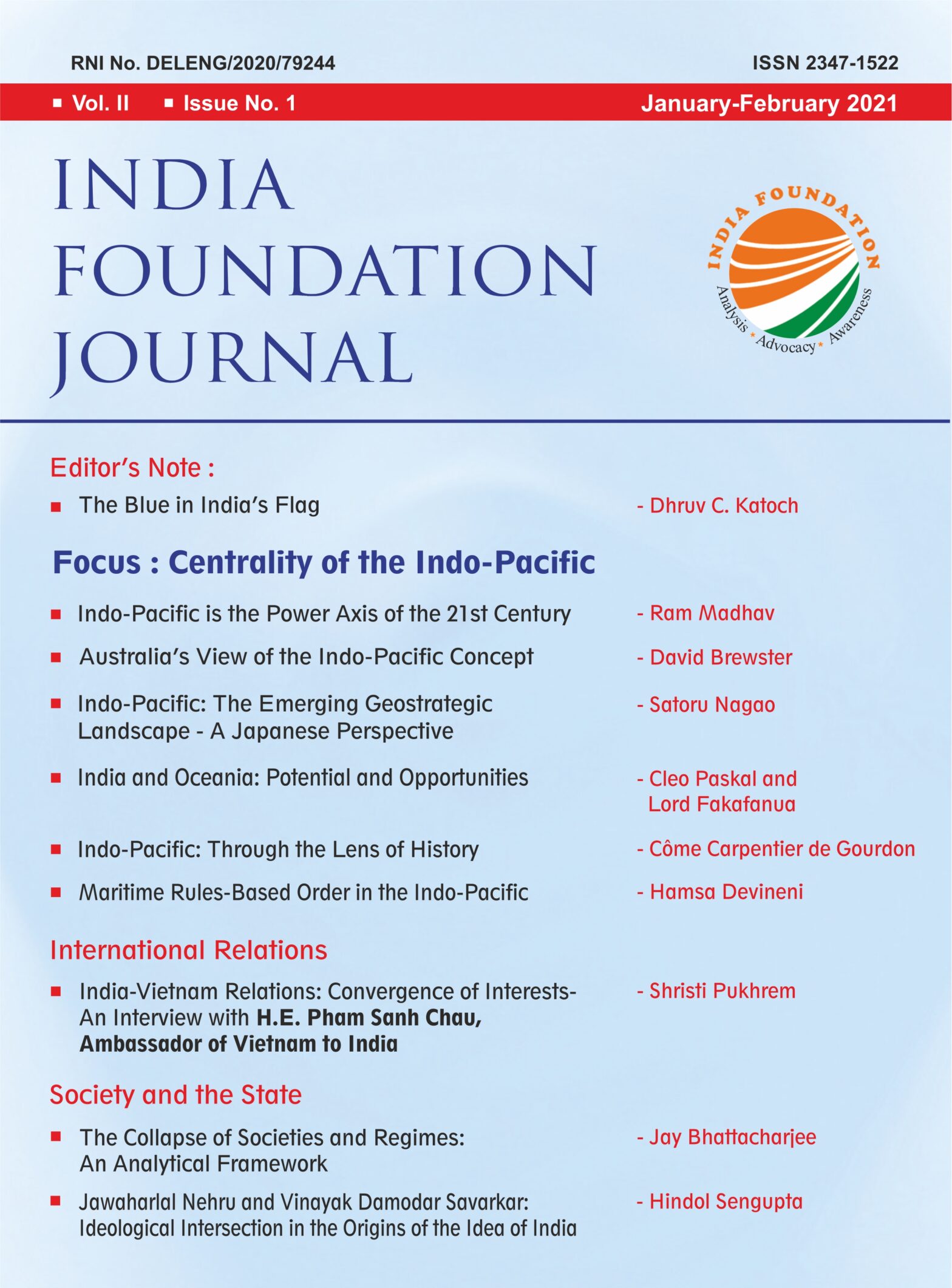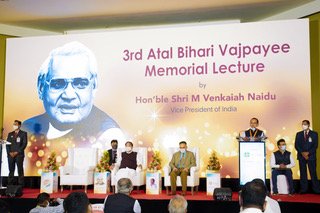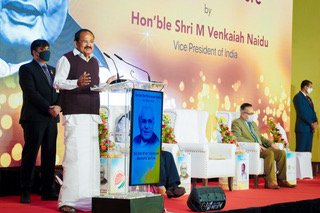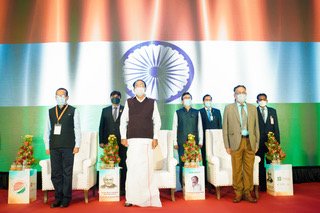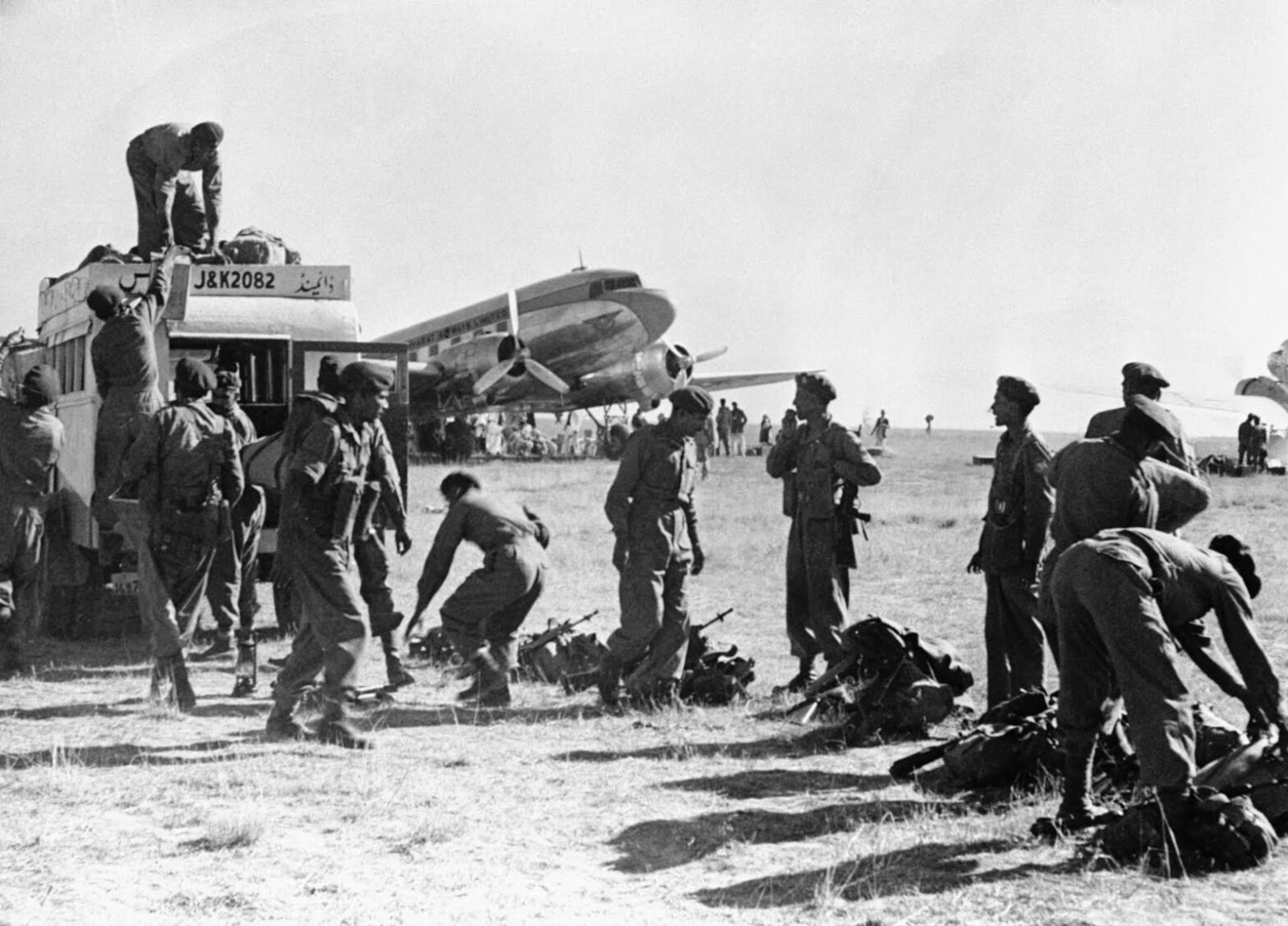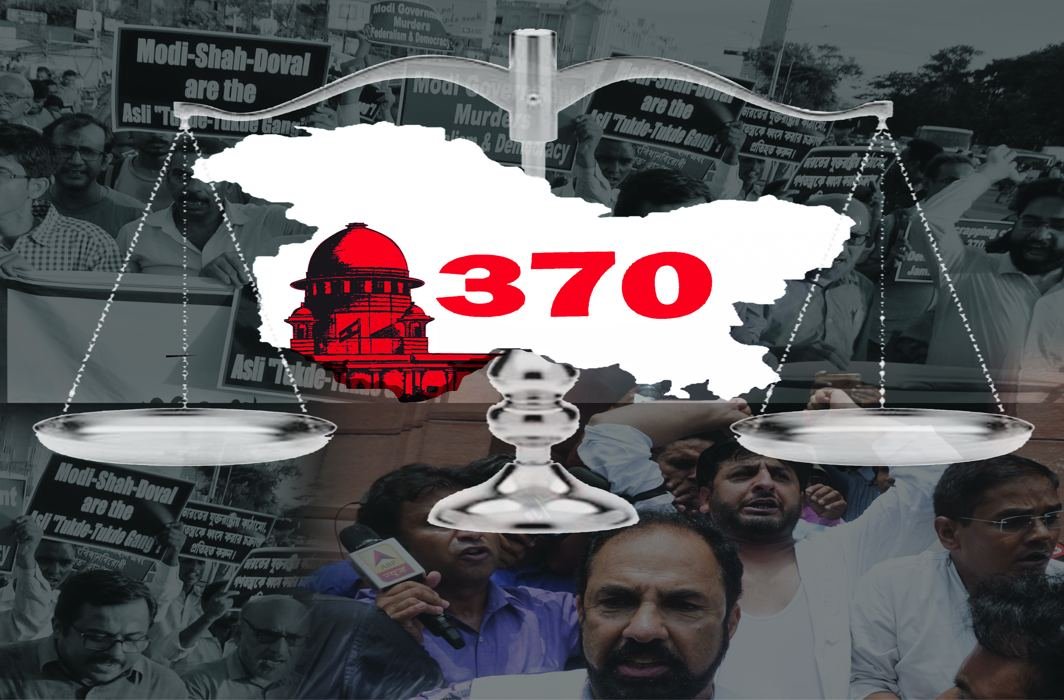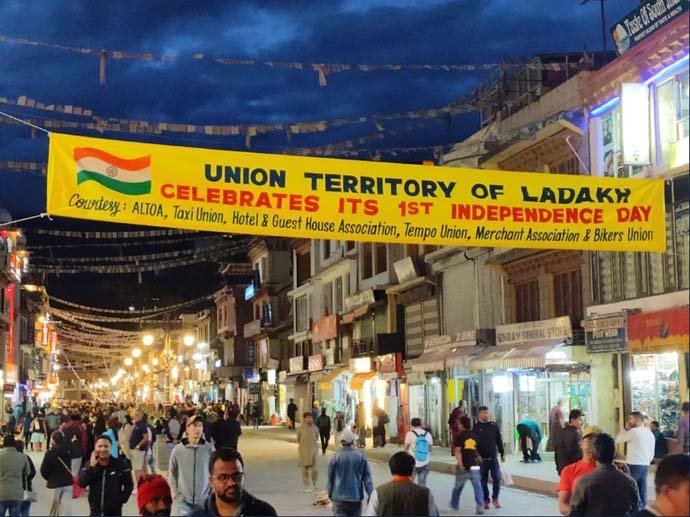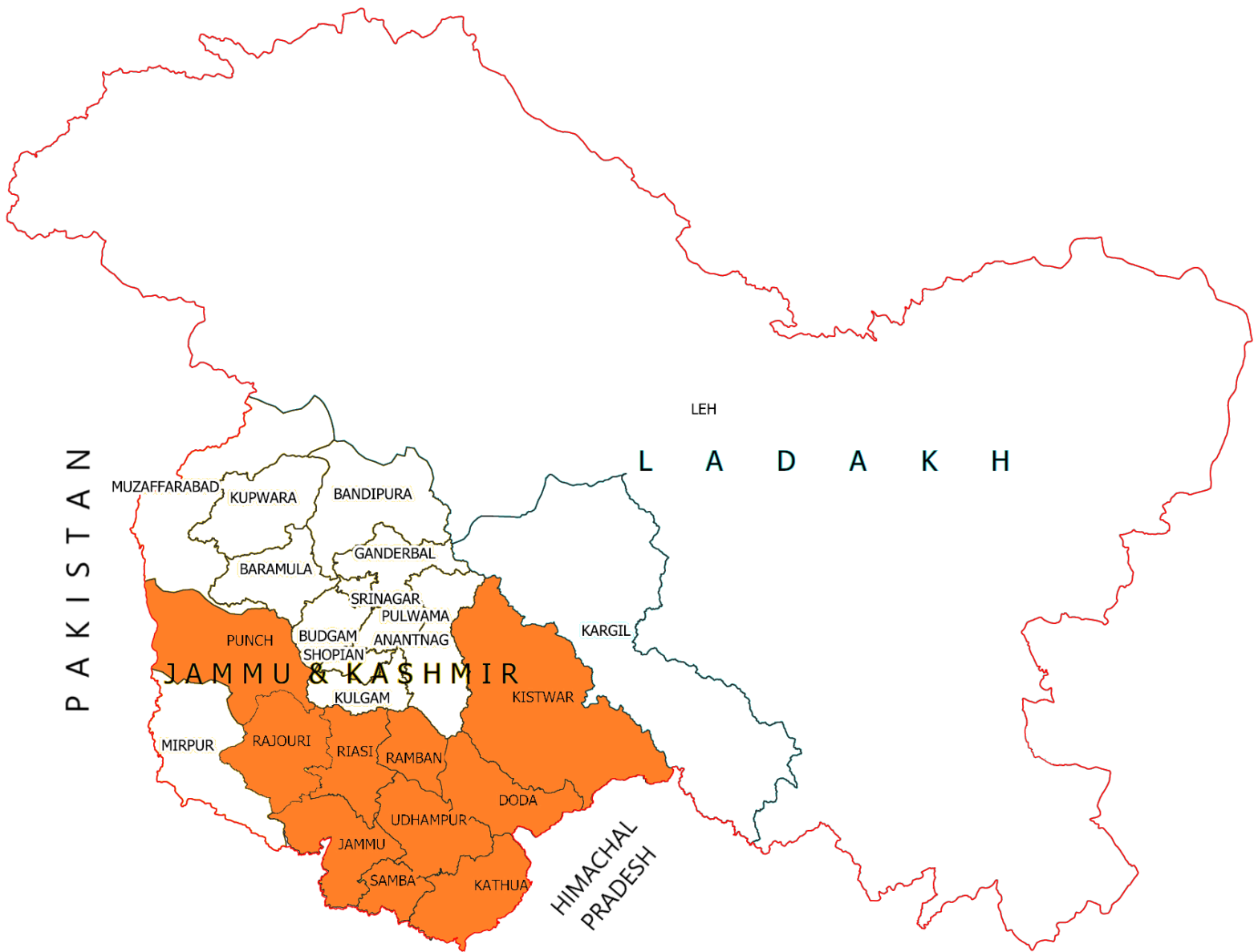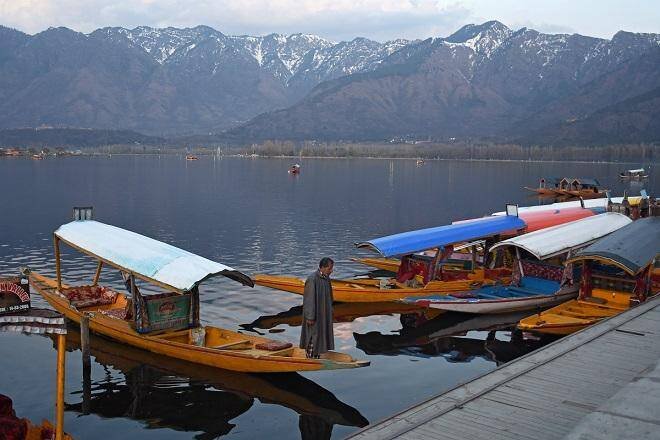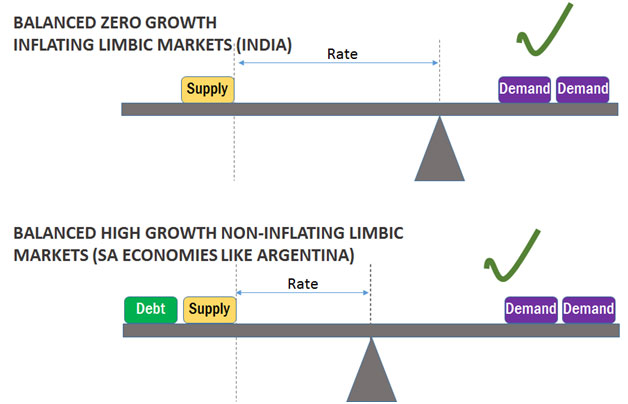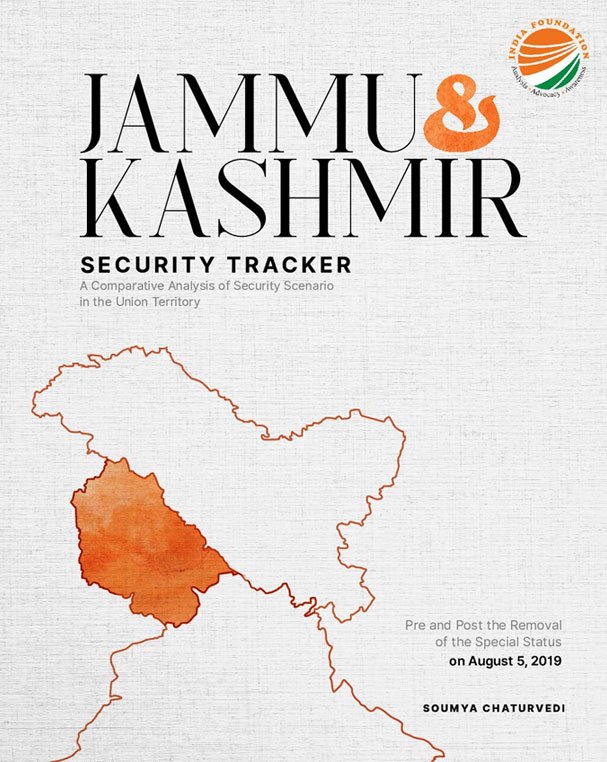The Justice and Development Party (AKP) led by President Recep Tayyip Erdoğan ostensibly moved closer to realising their dream of heading a new Islamic Caliphate with the Turkish parliament’s decision on July 10, 2020 to reconvert Hagia Sophia into a mosque.[i] The aim is to preside over a Grand Turkey, reminiscent of Ottoman glory, by 2023, the centenary of the establishment of the Turkish Republic by Mustafa Kemal Pasha (Ataturk). The latter, ironically, crafted a secular State and turned Hagia Sophia (and other prominent churches that had been converted into mosques) into a museum in 1934. Hagia Sophia was built by the Orthodox Church in the fourth century, after razing a temple of the Classical Greek faith that was then dominant in the region. In 1453, the Ottomans conquered Constantinople (now Istanbul) and Sultan Mehmet II changed Hagia Sophia into a mosque.
The quest to head a caliphate began when Ataturk abolished the caliphate and exiled the last Ottoman Caliph in 1924. The early contenders were King Fuad of Egypt and the tribal leader Ibn Saud. Then, Pakistan entered the race with Prime Minister Liaquat Ali Khan hosting a World Muslim Conference in 1951. However, in 1952, Gamal Abdel Nasser staged a coup in Egypt and became the inspirational leader of the Muslim world when he nationalised the Suez Canal in 1956 and staved off a British-Israeli attack; but Egyptian ambitions collapsed when Israel routed the Egyptian and Syrian armies in 1967. Finally, the Saudi King Faisal won the leadership round, thanks to the financial bonanza that followed the oil crisis of 1973. But, by the twenty-first century, the turmoil in most Muslim nations refuelled Turkey’s desire to head a caliphate, comprising mostly of non-Arab Muslim nations.[ii]
It remains to be seen if Erdoğan will pursue the unfulfilled Ottoman dream to capture Jerusalem; his quest to dominate the Middle East has already begun. On a visit to Pakistan in February 2020, Erdoğan attacked US President Donald Trump’s peace plan for Jerusalem as a “plan of annexation, occupation and demolition”.[iii] The proposal included a two-state solution to end the Palestine-Israel conflict, and was tilted in favour of Israel. Erdoğan asserted, “Jerusalem is our red line… we will not leave Haram al-Sharif (Al Aqsa mosque) to the mercy of the occupying Israeli administration”.[iv]
The move caused dismay in Russia (Orthodox). Sergey Gavrilov, head of Russia’s State Duma Committee for the Development of Civil Society, Public Issues and Religious Associations, urged Moscow to negotiate with Turkey for control of at least seven churches that once belonged to the Orthodox Church. In fact, Duma members demanded that Moscow seek control of Orthodox farms, pilgrim centres, and hotels, which were “built by Russians and belonged to [Russia] before the revolution”. Officially, the Kremlin said that the former cathedral “has sacred meaning to all Orthodox believers,” but its status is “an internal affair of Turkey”.[v] However, on August 21, 2020, the Byzantine-era Chora church (declared a museum in 1945) was reconverted into the Kariye Mosque. There is anxiety over the fate of its icons after Hagia Sophia installed curtains to screen an image of Mary and infant Jesus.[vi]
Muslim Brotherhood
Syrian President Bashar al Assad, speaking to Russia-24 TV in March 2020, revealed Erdoğan’s links with the Muslim Brotherhood: “At a point in time, the United States decided that secular governments in the region were no longer able to implement the plans and roles designated to them… They decided to replace these regimes with Muslim Brotherhood regimes that use religion to lead the public… This process of “replacement” started with the so-called Arab Spring. Of course, at the time, the only Muslim Brotherhood-led country in the region was Turkey, through Erdoğan himself and his Brotherhood affiliation”.[vii]
To understand the dangers posed by the Muslim Brotherhood, it is pertinent to review its origins and quest for Islamic Caliphate, its rabidly anti-Jewish theology and links with Nazi Germany, a relationship that the United States and the West glossed over while pursuing their post-World War II agenda for global dominance.
The Muslim Brotherhood was founded in 1928 by Hassan al-Banna (born October 14, 1906, in Egypt), son of a local imam. Launched just four years after Kemal Ataturk abolished the Caliphate, the Brotherhood focused on indoctrination of its recruits. It professed charity and social service, but its inner agenda was to seek power and reestablish the Caliphate and Islamic rule over Egypt and the entire Muslim world. It taught that, “Allah is our goal; The Prophet is our Leader; The Qur’an is our Constitution; Jihad is our Way; Death in the service of Allah is the loftiest of our wishes”.[viii]Hassan al-Banna was a Freemason; British intelligence possibly had a role in creating the Brotherhood.
Hassan Al-Banna revived the Assassins Cult (hashshāshīn) of the twelfth century Crusades, and called it, “Art of Death” (fann al-mawt) or “Death is Art” (al-mawt fann), a martyrdom to be revered, based on the Qur’an. From the 1990s, this cult inspired all Sunni Islamic terrorist organizations, especially Al Qaeda and Hamas. Al-Banna borrowed much of his philosophy from Adolf Hitler, whom the Brotherhood contacted in the 1930s. Hitler’s autobiography, Mein Kampf(My Struggle), was translated into Arabic and published under the title My Jihad. Al-Banna had copies of the Nazi anti-Semitic newspaper, Der Sturmer, adapted to the Arab world. The Brotherhood’s assassination bureau (al-jihaz al-sirri) was headed by Hassan’s brother, Abd Al-Rahman Al-Banna, and trained and funded by Nazi agents from Germany.
Haj Amin el-Husseini, top Brotherhood leader in Palestine, was born in Ottoman Jerusalem in 1893, and is regarded as the father of Arab terrorism. On joining the Ottoman army, he was assigned to the Forty-Seventh Brigade in the city of Smyrna and participated in the Armenian genocide in which 1.5 million Christians were massacred by Turkish troops. He became a staunch advocate of Islamic Caliphate.[ix] The Palestinian gained importance because of the Balfour Declaration of 1917. On January 3, 1919, Zionist leader Chaim Weizmann and Arab leader Emir Feisal, son of the King of Hejaz, agreed to execute the Balfour Declaration that mooted “the establishment in Palestine of a national home for the Jewish people”, while protecting non-Jewish communities. After the accord was signed in 1920, riots broke out between Jews and Arabs; 47 Jews died and dozens were injured. Al-Husseini was sentenced to ten years’ imprisonment in absentia, and fled to Syria. He was pardoned by British High Commissioner Herbert Samuel and made Grand Mufti of Jerusalem in 1921.
In July 1922, the League of Nations unilaterally approved the British Mandate over Palestine, to create a Jewish homeland, as promised in the Balfour Declaration. After the Arab Revolt in 1936, al-Husseini raised armed militias to attack the Jews, who retaliated, forcing the British to deploy troops to restore order. Al-Husseini was removed from office in late 1937; fearing arrest, he escaped to Lebanon and finally went to Germany.
In meeting with Hitler in November 1941, he said the Arabs and Nazis had common enemies: Jews, English, and Russians. At Schutzstaffel commander Heinrich Himmler’s suggestion, Hitler asked him to recruit Bosnian Muslims; the 20,000-strong 13th Waffen Mountain Division became first non-German SS division.[x] Hitler tweaked the Nazi dogma of racial purity to accommodate the Brotherhood by declaring al-Husseini an honorary Aryan and Bosnian Muslims as pure Aryan. Muslim Brotherhood leaders in Berlin worked directly with Himmler to create militias to execute Jews and other enemies of the Reich. In the 1950’s, the CIA “discovered” the Brotherhood’s anti-communist leanings and began a long relationship, initially supported by the Saudi Monarchy. Osama bin Laden belonged to the Muslim Brotherhood.[xi]
The Brotherhood fought the Communist resistance forces in Bosnia and in seven other Nazi campaigns in the Balkans. They helped to decimate the Bosnian Jews; 12,000 of the 14,000-strong community were murdered. The surviving members of the Division surrendered to the British in May 1945; ten were executed for war crimes. At the Nuremberg trials, Adolf Eichmann’s deputy, Dieter Wisliceny, testified that al-Husseini was one of the main actors in the Holocaust.[xii]However, al-Husseini returned unmolested to Cairo in 1946.
Historian Mehnaz M. Afridi notes that the involvement of Muslims in the genocide of Jews affected Algeria, Tunisia, Morocco, and Libya under the fascist, Nazi, and Vichy regimes, though Jews and Muslims also cooperated in this traumatic era. Algerian writer Boualem Sansal (The German Mujahid, 2009) studied the complexity of the Holocaust and Islamic fundamentalism, including stories of Muslim saviours.[xiii] There is historical documentation of Muslims saving Jews in Albania, Morocco, Turkey, Iran, Kosovo, Sarajevo, and Tangiers. In fact, Albania (70 percent Muslim and 30 percent Christian) saved all its Jewish citizens during the Holocaust; Turkey rescued Jews who were citizens of the Ottoman Empire.
The Balfour Declaration and Nazi propaganda fuelled anti-Semitism in Arab lands during World War II. In 1950, Sayyid Qutb, who would emerge as the Brotherhood’s leading ideologue, accused Jews of “evil-doing) (Our Struggle with the Jews). He was executed in 1966.[xiv] From the 1950s to the 1980s, the wars with Israel and migration of Arab Jews to Europe, the United States, and Israel increased tensions, and an era of Holocaust denial began. Many Arabs saw the Holocaust as a war-time event that was exaggerated to gain sympathy for Israel, as it took place in Europe, by Europeans, while the Palestinians paid the price.[xv]
Hamas was created in December 1987, as the Brotherhood’s armed wing in Palestine. The Hamas Covenant of 1988 blames Jews for causing World War I and II and repeats European anti-Semitic theories. Its Article Eleven states, “the land of Palestine is an Islamic Waqf consecrated for future Moslem generations until Judgment Day. It, or any part of it, should not be squandered: it, or any part of it, should not be given up.” The contemporary Muslim Brotherhood has not disowned the anti-Semitic views of past leaders or dissociated from Hamas. Addressing huge crowds in Tahrir Square on February 23, 2011, Sheik Yusuf al-Qaradawi exhorted capturing Al Aqsa Mosque in Jerusalem and urged the Egyptian military to open Rafah border with the Hamas-ruled Gaza Strip to provide aid to the Palestinians.[xvi] Al-Qaeda, Islamic Jihad and ISIS also derive from the Brotherhood.
The Muslim Brotherhood’s Mohammed Morsi was sworn in as Egypt’s first democratically elected president on June 30, 2012. However, neglecting the country’s economic crisis, Morsi pushed through a new constitution that gave him absolute powers, allowed clerics to interfere in the law-making process, and took away the legal rights of minority groups. Protests broke out in July 2013, and finally the army intervened under General Abdel Fattah el-Sisi …[xvii]
Erdoğan: Islamist Ataturk
Erdoğan, who ruled Turkey as Prime Minister from 2003 to 2014 and as president since 2014, is seeking recognition as an “Islamist Atatürk”. His political views were shaped by Necmettin Erbakan (1926–2011), founder of many Turkish Islamist parties and author of an Islamist manifesto Millî Görüş (“National Vision”, 1969). Erbakan was briefly Prime Minister of Turkey in 1996-7. Once he felt that the quest for full membership of the European Union was futile, Erdoğan became overt in his ambition to resurrect the glory of the Ottoman Empire and be recognised as the caliph, or a caliph, of the Muslim world. The European Union declared Turkey as a candidate country in 1999, but sustained obstacles irked Erdoğan even as regional developments diminished his desire for Western acceptance and Riyadh’s falling economic stature boosted his ambitions.
The lure of the Caliphate can be understood from Turkey’s national flag: when the Muslim Turkic armies of Central Asia conquered Anatolia, they added the latter’s crescent and star to their plain red flags. The Turkish flag adopted in 1936 is simply the 1844 Ottoman flag. No other Islamic country has the crescent and star; in 1947, Pakistan emulated the Turkish flag, using a green background.
A schism is discernible between the Arab States formally led by Saudi Arabia and the non-Arab States led by Turkey. Erdoğan had welcomed the victory of Mohamed Morsi in Egypt in 2012 and was upset when Morsi was overthrown. Gen. Abdel Fattah el-Sisi banned the Muslim Brotherhood and executed several leaders; many fled to Turkey. As Saudi Arabia, UAE, Kuwait, Jordan and Bahrain also banned the Muslim Brotherhood for trying to overthrow their monarchies, a geopolitical fault line emerged in the Arab world. Turkey is supported by Malaysia, Pakistan, Qatar, and a beleaguered Iran.
Despite having cordial relations with Assad, Erdoğan supported the Sunnis against Assad in the civil war, and ruined relations with Egypt, Israel and other states in the Middle East and Europe. By February 2018, he asserted, “The Republic of Turkey is a continuation of the Ottoman Empire… Of course, the borders have changed. Forms of government have changed… But the essence is the same, soul is the same, even many institutions are the same”. Admirers already see him as a ‘caliph’ (“successor” in Arabic, to the Prophet) and shadow of God on Earth.[xviii]
As rotating president of the OIC, he led the protest against Israel’s killing of Palestinian activists in 2018. In October 2018, the murder of Saudi journalist Jamal Khashoggi in the Saudi consulate in Istanbul provided an opportunity to embarrass Riyadh, and Ankara slowly released evidence that Khashoggi was killed and dismembered by a hit team sent by Riyadh.
In November 2018, Erdoğan’s close advisors hosted a meeting in Istanbul of Islamists from 28 countries (including Russia, India, Bosnia and Herzegovina, Saudi Arabia, Egypt, Sudan, Nigeria, Malaysia and Kazakhstan) to promote the idea of an Islamic grouping led by the Turkish president by 2023. The Muslim Brotherhood’s international network was tapped to create proxies across the world.[xix] Erdoğan’s close confidant Nureddin Nebati said the real purpose of the “Islamic Union Congress” was to convey to the Islamic world that Turkey is offering Erdoğan as imam to lead all Muslims. He compared the Turkish president to the lead bead in the Islamic tespih (prayer beads used by Muslims to recite and count their prayers).
At the end of a three-day marathon, the conclave announced that it aims to create a super Islamic Bloc encompassing 60 countries and 1.6 billion Muslims with 12.8 per cent of the world’s land. It would control 55.5 per cent of the world’s oil reserves and 64.1 per cent of natural gas resources. The conclave was partnered by the International Union of Muslim Scholars (IUMS), a Muslim Brotherhood-linked body and brainchild of Yusuf al-Qaradawi; its general secretary, Ali Muhiuddin Qara Daghi, addressed the meeting. The IUMS is listed as a terrorist group by Saudi Arabia, the UAE, Egypt and Bahrain.
Erdoğan revealed his caliphate ambitions in October 2014, but the failed coup of July 15, 2016 and referendum of April 16, 2017, gave him the opening he needed. Erdoğan was warned about the coup by Russian President Vladimir Putin and not by his own intelligence service or military, or NATO’s Communications and Information Agency, or even the US Intelligence agencies. As forces loyal to him scrambled to defeat the coup, Erdoğan sent text messages to Turkish cellphone users to come to the streets to defend their nation. Three hundred Turks died that night.[xx]
Erdoğan blamed Sunni spiritual leader Fethullah Gülen (based in Pennsylvania, US) for the coup, and ties with Washington became strained when the United States refused to extradite him. Intelligence sources said that if Gülen had been involved, the NSA would have picked up some signs. However, Erdoğan declared a state of emergency and assumed the power to rule by decree. Later, the referendum allowed him Erdoğan to stay in office until 2029, or longer, due to a loophole in the constitutional amendments, and gave him enormous powers.
Ankara and Tehran sent food and essential supplies to Qatar in June 2017 after Saudi Arabia, the United Arab Emirates, Egypt, and Bahrain, blockaded the country for funding terrorism and the Muslim Brotherhood. Riyadh demanded that Qatar expel Turkey from its air force base.
Erdoğan’s moves have complicated matters in the Islamic world. Washington, Moscow and Beijing have interests in the Middle East. Turkey is still a NATO State, and the only NATO member in the Middle East and Asia. Though Erdoğan professes concern for all Muslim causes (Palestine, Yemen, Kashmir, Rohingya, and Uighur), his focus is on non-Arab countries (Iran, Afghanistan, Malaysia, Indonesia, Pakistan) and Muslims of non-Arab nations (India, Myanmar). India’s radical cleric Sheikh Salman Nadwi, who supported late Abu Bakr al-Baghdadi and Zakir Naik, has often been fêted in Turkey. However, the need for closer economic ties with Beijing led Ankara to agree to extradite Enver Turdi, a Uighur who fled Xinjiang in 2014, and quietly deporting several Uighurs.[xxi]
Libya
The Muslim Brotherhood lost two nations after Mohamed Morsi was overthrown in Egypt (July 2013) and Omar al-Bashir in Sudan (April 2019). To establish himself as regional hegemon, Erdoğan in December 2019 signed a military cooperation pact with the UN-recognised regime of Fayez Mustafa al-Sarraj in Tripoli (Government of National Accord or GNA), to ward off the challenge by Gen. Haftar’s Libyan National Army (LNA), based in oil-rich Tobruk. Libya has been ravaged by tribal wars since the assassination of Muammar al-Qaddafi in October, 2011. Gen. Haftar is seeking to end the division of the country, backed by Russia, UAE and Jordan.
In May 2020, Turkey helped the GNA destroy LNA’s Watiya air base, including a Russian Pantsir-1 battery, and takeover the strategic base. When Russia moved six warplanes from Syria to Libya, Erdoğan threatened to bring Turkish warplanes to bomb Haftar’s troops. Simultaneously, he urged Algeria’s newly-elected president Abdelmadjid Tebboune (who depends on unofficial backing from the Algerian Muslim Brotherhood) to sign a defence pact with the GNA regime.
On June 7, 2020, a Tanzanian-flagged cargo ship, Cirkin, sailed from Turkey to the Libyan port of Misrata, accompanied by three Turkish warships. Fearing that arms were being smuggled to help al-Sarraj in violation of a UN arms embargo, a Greek (NATO) helicopter tried to board Cirkin, but was denied permission by the Turkish warships. A French (NATO) frigate, Courbet, was also rebuffed and the Cirkin landed in Libya.
On the weekend of July 18, 2020, Turkey’s Defence Minister Hulusi Akar met Qatari Emir, Prince Tamim Bin Hamad Al Thani, to discuss moving Qatar-trained Somali jihadist fighters to Libya, for an attack on Sirte. Erdoğan sent Turkish troops with drones, military vehicles, and thousands of Syrian mercenaries from Faylak al-Sham (The Syrian Legion), a Muslim Brotherhood affiliate, to strengthen al-Sarraj. Should Algeria join al-Sarraj, Erdoğan would have tilted the balance of power in the region, creating insecurity in North African nations, especially Egypt. This will also affect European, especially southern European, navigation in the Mediterranean and offshore oil projects in between.
Angered at Turkey signing a maritime delimitation agreement with the al-Sarraj regime, thereby intensifying disputes over potential offshore oil and gas fields in the eastern Mediterranean, Egypt and Greece signed an agreement on August 6, 2020, defining an exclusive economic zone between the two countries.[xxii] Interestingly, Palestine has indicated a desire to cooperate with Ankara in developing the Gaza marine gas deposit, 36 km off the Gaza coast and believed to have reserves of 31 billion cubic meters, which has not been explored due to persistent Israeli-Palestinian clashes.[xxiii]
Previously, in May 2020, at a virtual meeting with the foreign ministers of Greece, Cyprus, UAE and France, Egypt launched an alliance to confront Turkish moves in Libya and the Mediterranean. The alliance said it would challenge Turkish moves in Cyprus’s territorial waters, where Turkey has been carrying out “illegal” drilling operations. Berating Turkey’s military pact with al-Sarraj, it urged Ankara to stop sending foreign fighters from Syria to Libya.[xxiv] France’s role in the alliance will be critical as it is a member of the European Union and can help in imposing sanctions on Turkey to protect Cyprus. Prof Tariq Fahmy, Cairo University, observed that being a permanent member of the United Nations Security Council, France can also veto any decision in favour of Turkish moves in Libya. French President Emmanuel Macron supported Gen. Haftar when they met on March 9, 2020, in Paris.
Malaysia
The then Malaysian Prime Minister Mahathir Mohamad hosted a four-day summit of Muslim leaders in Kuala Lumpur (December 18-21, 2019), to discuss problems facing the Muslim world.[xxv] The Emir of Qatar, Sheikh Tamim bin Hamad Al Thani, Turkish President Recep Tayyip Erdoğan and Iranian President Hassan Rouhani, attended. Indonesian vice president Dr. Ma’ruf Amin and Pakistani Prime Minister Imran Khan dropped out at the last minute, in deference to Saudi wishes.
The Emir of Qatar, Sheikh Tamim, criticised “armed militias that commit terrorist acts,” and “the use of methods of force, blockade, starvation and dictation of opinions,” a reference to the Saudi role in the Yemeni civil war and the Saudi-led land, sea and air blockade against Qatar from 2017. President Erdoğan said the UN Security Council had no Muslim presence and is “way past its expiry date” as the world is larger than its five permanent members. He urged Muslim countries to trade in their own currencies, a suggestion backed by Mahathir, who mooted a return to the gold standard.
Mahathir said the Islamic world is plagued with “fratricidal wars, civil wars, failed governments and many other catastrophes”. Many nations are accused of authoritarianism and disregard for human rights, and not a single Muslim nation ranks as a developed country despite immense wealth. The summit, to be called the Perdana Dialogue from 2020, was exploratory and discussed broad issues of governance, culture, security, trade (gold and barter trade to avoid economic sanctions), and technology; its evolution merits watching.
The summit avoided the Rohingya crisis in Myanmar, Islamic State, Kashmir, Uighur’s in Xinjiang, the strife in Syria and Yemen. However, Malaysia continues to host the radical Islamist preacher, Zakir Naik, and has given him permanent resident status.
Iranian President Rouhani urged Muslim nations to enter preferential trade agreements using local currencies and to create a special mechanism for banking and financial cooperation. Reeling from US sanctions that make it difficult to get Western insurers to cover Iranian exports, including oil, Rouhani proposed a transport insurance mechanism exclusively for Muslim nations: “The Muslim world should be designing measures to save it from the domination of the United States dollar and the American financial regime”.[xxvi] Entrepreneur and artificial intelligence expert Igor Ashmanov said Russia being neither Eastern nor Western could offer Muslim nations lessons in technology and cyber-security.
Pakistan
Pakistan hosts a plethora of jihadi groups to pursue its domestic and foreign policy objectives. Since 2012 at least, the ISI has been laundering money from a small Italian town, Brescia.[xxvii] The Finance Police in Udine, Italy, uncovered a money laundering system (hawala) behind a defunct internet point. The money was mainly sent to Afghanistan and Pakistan by citizens of those countries, but those citizens did not have any ‘official’ source of income, and the owners of the ‘ghost’ internet point were Pakistanis.[xxviii] The probe exposed a network of money transfers often linked with shops unconnected to financial exchanges (hairdressers or grocery stores).
The value of the irregular transactions was over €8 million. The suspects included the head of the Madina Trading agency in Corso Garibaldi, Brescia, where cell phones used in the 2008 Mumbai bombings were activated and money sent to India. Interestingly, the number of Pakistani immigrants in Brescia rose from 135 people in 1991 to 3,738 (January 1, 2019), making them the largest immigrant community in Brescia.
The Janjua brothers, who own Madina Center, moved the shop but remained in the business, even after Italian police discovered that between 20 September and 25 December 2008, they had sent more than €400,000 to Pakistanis being watched for terrorism, and later sent money for Uri, Jammu and Kashmir, India. The detectives monitored several ‘Pakistani Islamic cultural centres’ in Brescia, and uncovered a network of al Ummah Italia, al Noor, Masjid Ennour Onlus, Arahma Onlus and Tabligh Islamic Center of Beidzzole, all linked to a ‘Society of Propaganda’ that engaged in door-to-door evangelism to convert non-believers or ‘bad’ Muslims.
Brescia town hosts Brescia Middle East, owned by Lebanon-native, Tony Abi Saab, an international arms dealer company that supplies terrorist groups with high-tech guns and ammunition. All deals are strictly cash; Brescia Middle East also launders money via a banker friend and shell companies.[xxix] US Army reports say Tony’s company, Brixia, made spare parts for weapons and smuggled them across the Middle East for re-assembly and sales. He reportedly sold pistols and machine guns to Daesh through Turkey. Aided by the CIA and FBI, the US Army arrested Tony in Afghanistan, but a sharp legal defence saw him released with only a small fine; his shell companies (Tactica Ltd Afghanistan, K5 Global, Bennet-Fouch and SIMAINT) continue operating in the Middle East.
Caliphate and India
Turkey is emerging as a new hub for anti-India activities after the tweaking of Article 370. This goes far beyond its traditional support to Pakistan at the OIC.[xxx] The Institute of Strategic Thinking and Lahore Centre for Peace Research organised a conference on Kashmir (November 21, 2019), in Ankara, where the Indian action was condemned. The invitees included Pakistan Senator Sherry Rahman, former diplomat and chairman of the Lahore Centre for Peace Research Shamshad Ahmad Khan and UK-based Kashmiri lobbyist Lord Nazir Ahmad.[xxxi] Turkey supported Pakistan in the Financial Action Task Force (FATF) and UN General Assembly where Erdoğan said the world has not paid proper attention to Kashmir, and the issue has to be resolved through “dialogue on the basis of justice, equity, and not through collision”.[xxxii] (September 25, 2019)
Turkey has universal jurisdiction laws as part of its domestic laws that Khalistani separatists tried to invoke to embarrass India. In October 2018, Sikhs For Justice (SFJ) filed a case against Punjab Chief Minister Capt. Amarinder Singh when he visited Turkey to pay homage at Gallipoli to soldiers from the First Patiala Infantry Regiment (now 15 Punjab) on the centenary of the War. The Captain served in this regiment in the Indian army. SFJ alleged torture of activists detained in Punjab for canvassing for the separatist Khalistan ‘Referendum 2020’. Gurpatwant Singh Pannun, legal advisor to SFJ, filed the complaint on October 28 with the Office of Public Prosecutor of Gallipoli, and sought the Captain’s arrest.[xxxiii] He told the media that Article 13 of the Turkish Penal Code provides that Turkish law shall apply to “inter alia the offences of genocide, crimes against humanity and torture committed in a foreign country whether or not committed by a citizen or non-citizen of Turkey”.[xxxiv] However, Amarinder Singh visited the World War I Helles Memorial unmolested, and dismissed the SFJ threats as “publicity seeking stunts”.[xxxv]
Shah Faesal, who resigned from the IAS and founded a political party, the J&K Peoples Movement, was detained at Delhi airport while trying to take a flight to Turkey in August 2019. An unnamed official of his party told media that Faesal was going to the International Court of Justice (ICJ) to file a case against India for revoking Article 370 in Jammu and Kashmir when he was arrested and sent back to Srinagar.[xxxvi]
Experts believe that like Pannun, he hoped to use Turkey’s laws as individuals cannot file cases in The Hague; possibly Islamabad would then use that to take the Jammu and Kashmir issue to the ICJ. Pakistan Prime Minister Imran Khan tweeted on August 15, 2019: “Will world silently witness another Srebrenica-type massacre & ethnic cleansing of Muslims in IOK? I want to warn international community if it allows this to happen, it will have severe repercussions & reactions in the Muslim world setting off radicalisation & cycles of violence”. Srebrenica witnessed the 1995 genocide of over 8,000 Bosnians by the Bosnian Serb army. There has been no massacre of Kashmiri Muslims in India, but the tweet suggests a possible ISI hand in the aborted Turkish escapade. India will have to keep a close watch on the 21st century incarnation of the caliphate.
The one thing that can checkmate Erdoğan’s caliphate dream is the sinking Turkish economy, with the Lira falling 20 per cent against the US dollar. Erdoğan attributed the decline to the Coronavirus pandemic and the devastating explosions in Beirut, but the fact is that Turkey’s economy was in doldrums long before the pandemic arrived. Its central bank has exhausted nearly one-third of its foreign exchange reserves; the wars in Libya and Syria have further crippled economic recovery. In an ominous development for Erdoğan, the AKP lost major municipalities in 2019, including Ankara and Istanbul, and the opposition parties have made economic development and corruption in the AKP their principal electoral planks. Given the regime’s claims of presiding over a “strong economy”, recourse to the IMF is ruled out.[xxxvii]
(Sandhya Jain is a political analyst, independent researcher, and author of multiple books. She is also editor of the platform Vijayvaani)
[i] Asian Warrior, Hagia Sophia: Ottoman Revival, July 13, 2020. https://www.asianwarrior.com/2020/07/hagia-sophia-ottoman-rvival-erdogan.html
[ii] Dawn, Who is the leader of the Muslim world?, Nadeem Paracha, August 23, 2020. https://www.dawn.com/news/1575905/smokers-corner-who-is-the-leader-of-the-muslim-world
[iii] WION Web Team, Turkey President Erdogan rakes up Kashmir issue in Pakistan Parliament, Feb 14, 2020 https://www.wionews.com/south-asia/news-update-breaking-Turkey-President-Erdogan-rakes-up-Kashmir-issue-in-Pakistan-Parliament
[iv] Dawn, ‘No difference between Gallipoli and occupied Kashmir’: Erdogan stands by Pakistan in Parliament speech, Javed Hussain, February 14, 2020. https://www.dawn.com/news/1534429/no-difference-between-gallipoli-and-occupied-kashmir-erdogan-stands-by-pakistan-in-parliament-speech
[v] RT, Following Hagia Sophia’s conversion to mosque, Russian MPs want Turkey’s disused Orthodox churches under Moscow’s control, Jonny Tickle, July 16, 2020. https://www.rt.com/russia/494970-russian-mp-turkeys-disused-churches-moscow/
[vi] Reuters, After Hagia Sophia, Erdogan reconverts Turkey’s historic Chora church to mosque, Aug 22, 2020. https://m.hindustantimes.com/world-news/after-hagia-sophia-erdogan-reconverts-turkey-s-historic-chora-church-to-mosque/story-aE0YyGSM57oSED7iqPvc2J_amp.html?__twitter_impression=true&s=03
[vii] Engdahl, F. William, Turkey’s Erdogan From Haga Sophia to the Shores of Tripoli and Beyond, July 30, 2020. https://journal-neo.org/2020/07/30/turkey-s-erdogan-from-haga-sophia-to-the-shores-of-tripoli-and-beyond/
[viii] Engdahl, F. William, Turkey’s Erdogan From Haga Sophia to the Shores of Tripoli and Beyond, July 30, 2020. https://journal-neo.org/2020/07/30/turkey-s-erdogan-from-haga-sophia-to-the-shores-of-tripoli-and-beyond/
[ix] Al Arabiya, ANALYSIS: The Nazi roots of Muslim Brotherhood, Tony Duheaume, June 27, 2018. https://english.alarabiya.net/en/features/2018/06/27/ANALYSIS-The-Nazi-roots-of-Muslim-Brotherhood
[x] Timeline, The Nazis, with the help of an Arab cleric, used Islamic extremists as a tool, Louis Anslow, Apr 7, 2017. https://timeline.com/nazis-muslim-extremists-ss-6824aee281d2
[xi] Engdahl, F. William, Turkey’s Erdogan From Haga Sophia to the Shores of Tripoli and Beyond, July 30, 2020. https://journal-neo.org/2020/07/30/turkey-s-erdogan-from-haga-sophia-to-the-shores-of-tripoli-and-beyond/
[xii] Al Arabiya, ANALYSIS: The Nazi roots of Muslim Brotherhood, Tony Duheaume, June 27, 2018. https://english.alarabiya.net/en/features/2018/06/27/ANALYSIS-The-Nazi-roots-of-Muslim-Brotherhood
[xiii] See Norman Gershan, Besa: Muslims Who Rescued Jews during World War II, 2006; Fariborz Mokhtari, In the Lion’s Shadow: The Iranian Schindler and His Homeland in the Second World War, 2012; Robert Satloff, Among the Righteous, 2006; Karen Gray Ruelle and Deborah Durland Desai, The Grand Mosque of Paris: A Story of How Muslims Rescued Jews During the Holocaust, 2012; Joëlle Allouche-Benayoun, Perceptions of the Holocaust in Europe and Muslim Communities: Sources, Comparisons and Educational Challenges, 2013, and Michael Laskier, North African Jewry in the Twentieth Century: The Jews of Morocco, Tunisia, and Algeria, 1997.
[xiv] New Republic, Muslim Brotherhood and Nazi Germany, Jeffrey Herf, May 12, 2011. https://newrepublic.com/article/88104/muslim-brotherhood-anti-semitism-israel-egypt
[xv] The Role of Muslims and the Holocaust, Mehnaz M. Afridi, Aug 2014 https://www.oxfordhandbooks.com/view/10.1093/oxfordhb/9780199935420.001.0001/oxfordhb-9780199935420-e-005
[xvi] New Republic, Muslim Brotherhood and Nazi Germany, Jeffrey Herf, May 12, 2011. https://newrepublic.com/article/88104/muslim-brotherhood-anti-semitism-israel-egypt
[xvii] Al Arabiya, ANALYSIS: The Nazi roots of Muslim Brotherhood, Tony Duheaume, June 27, 2018. https://english.alarabiya.net/en/features/2018/06/27/ANALYSIS-The-Nazi-roots-of-Muslim-Brotherhood
[xviii] Erdoğan’s Ambition for the Caliphate and the Failure of Turkish Democracy, Aydogan Vatandas, June 25, 2018. https://consortiumnews.com/2018/06/25/Erdoğans-ambition-for-the-caliphate-and-the-failure-of-turkish-democracy/
[xix] Erdoğan’s caliphate dream put in motion in Turkey, Abdullah Bozkurt, November 27, 2018 https://stockholmcf.org/commentary-Erdoğans-caliphate-dream-put-in-motion-in-turkey/
[xx] Erdoğan: Self-Proclaimed Caliphate?, Cynthia Lardner, June 29, 2017 https://intpolicydigest.org/2017/06/29/Erdoğan-self-proclaimed-caliphate/
[xxi] Ahval News, Turkey accepted China’s extradition request for Uighur man – report, May 20, 2020 https://ahvalnews.com/turkey-china/turkey-accepted-chinas-extradition-request-uighur-man-report
[xxii] RT, Greece & Egypt sign deal on exclusive economic zone amid tensions with Turkey, August 6, 2020 https://www.rt.com/newsline/497297-greece-egypt-economic-turkey/
[xxiii] Dorsey, James M., Palestine plays regional power politics with proposed energy deal, July 14, 2020 https://mideastsoccer.blogspot.com/2020/07/palestine-plays-regional-power-politics.html
[xxiv] Al-monitor, Egypt announces international anti-Turkey alliance, George Mikhail, May 31, 2020. https://www.al-monitor.com/pulse/originals/2020/05/egypt-anti-turkey-alliance-libya-mediterranean-waters.amp.html?skipWem=1&__twitter_impression=true&s=09
[xxv] Malaysia kicks off Islamic summit with PM Mahathir denying talk of new Islamic bloc, December 19, 2019. https://www.straitstimes.com/asia/se-asia/malaysia-kicks-off-islamic-summit-with-non-saudi-aligned-countries-in-attendance
[xxvi] Progress of non-Muslims ‘left us in lurch’, Malaysia tells Islamic summit, Joseph Sipalan, Rozanna Latiff, December 19,2019 https://www.reuters.com/article/us-malaysia-muslimalliance/progress-of-non-muslims-left-us-in-lurch-malaysia-tells-islamic-summit-idUSKBN1YN0EU
[xxvii] Italy arrests network accused of money laundering and financing jihadists, Anti-Corruption Digest, May 11, 2018. https://anticorruptiondigest.com/2018/05/11/italy-arrests-network-accused-of-money-laundering-and-financing-jihadists/#axzz6CP8TiGCe
[xxviii] Pakistan-Italy Terror Funding Link: Why Shady Dealings in Brescia?, Francesca Marino, November 22, 2019. https://www.thequint.com/news/world/hawala-terror-funding-jihad-networks-italy-brescia-pakistan-immigrants
[xxix] How Brescia Middle East is laundering crime money collected from selling weapons to terrorists, Lebanon 247 News, January, 24 2019. http://news.lebanon247news.com/Lebanon_247_News/Politics_Law_Society/Chief_Editor/24_01_2019/24_01_2019_06_25_00.html
[xxx] Erdogan’s Kashmir Activism Stems From Islamist Ambitions, Abhinav Pandya, February 10, 2020. https://swarajyamag.com/politics/erdogans-kashmir-activism-stems-from-islamist-ambitions
[xxxi] Recep Tayyip Erdoğan’s recent activism on Kashmir is motivated by Turkey president’s Caliphate dreams, Abhinav Pandya, November 25, 2019. https://www.firstpost.com/world/recep-tayyip-Erdoğans-recent-activism-on-kashmir-is-motivated-by-turkey-presidents-caliphate-dreams-7695671.html
[xxxii] Erdogan support for Pakistan on Kashmir at UN an outcome of downswing in India-Turkey ties, Nayanima Basu, September 26, 2019 https://theprint.in/diplomacy/erdogan-support-for-pakistan-on-kashmir-at-un-an-outcome-of-downswing-in-india-turkey-ties/297376/
[xxxiii] Indian Express, SFJ files complaint against Captain Amarinder Singh in Turkey, to seek arrest warrant, October 30, 2018. https://indianexpress.com/article/cities/chandigarh/sfj-files-complaint-against-captain-amarinder-singh-in-turkey-to-seek-arrest-warrant-5424315/
[xxxiv] See Articles 76 and 77: https://www.legislationline.org/download/id/6453/file/Turkey_CC_2004_am2016_en.pdf
[xxxv] Indian Express, Found no trace of SFJ at Gallipoli: Punjab CM Amarinder Singh, October 31, 2018. https://indianexpress.com/article/cities/chandigarh/found-no-trace-of-sfj-at-gallipoli-punjab-cm-amarinder-singh-5426259/
[xxxvi] New Indian Express, Shah Faesal planned to take Kashmir issue to ICJ: Sources, August 17, 2020 https://www.newindianexpress.com/nation/2019/aug/17/faesal-planned-to-file-case-at-icj-2020114.html.
[xxxvii] New Eastern Outlook, Turkey: The Political Economy of Hagia Sophia, Salman Rafi Sheikh, August 13, 2020 https://journal-neo.org/2020/08/13/turkey-the-political-economy-of-hagia-sophia/


